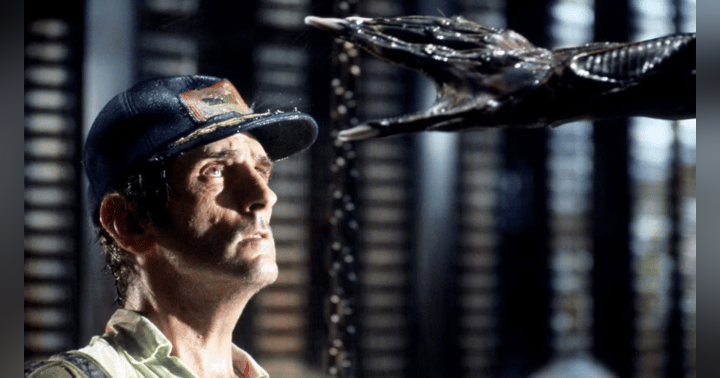The Texas Chainsaw Massacre (1974) A Grindhouse Nightmare That Refuses to Die

There are horror movies, and then there's The Texas Chainsaw Massacre. This 1974 fever dream of dread, sweat, and screams redefined what cinema could make you feel. In this week’s Born to Watch, Whitey and Damo dive headfirst into the chainsaw whirlwind, dissecting the legend, the legacy, and the low-budget brilliance of Tobe Hooper’s horror classic.
Setting the Scene: When Nothing Happens, and That’s Terrifying
The film kicks off with that unforgettable narration, dry, factual, and eerily calm. It grabs you not with gore, but with dread. It sells the idea that this could be real. And while the movie takes five minutes before you even see a human, it wastes no time in establishing its tone: grim, bizarre, and deeply uncomfortable.
Whitey and Damo both point out how effective the film is at stretching its tiny budget into maximum tension. There’s no music, no traditional score, just ambient sounds like humming generators, slaughterhouse machinery, and pig squeals that trigger a primal fear response. Tobe Hooper knew that what you don’t see or hear clearly is often more frightening than what you do.
A Family Full of Morgz? You Bet
As the movie’s deranged hillbilly family takes center stage, Whitey notes that nearly every character could be a version of Morgs, from the gas station dad, to the greasy hitchhiker, to Leatherface himself. It’s not exactly flattering, but it’s hilarious and disturbingly accurate.
The conversation deepens with a look at Leatherface. With no real dialogue, Gunnar Hansen’s physical performance carries the entire character. His masks shift depending on his “role”: the butcher, the dinner host, the killer. The team praises the unsettling brilliance of making his psychology visible through costume alone.
Franklin: The Most Annoying Victim in Horror History
Nobody escapes the magnifying glass in this episode, especially not Franklin, Sally’s wheelchair-bound brother. Damo and Whitey don’t hold back. Whiny, irritating, and maybe even deserving of the chainsaw that eventually finds him, Franklin’s death gets one of the most satisfying responses in the podcast. “He was asking for it,” Damo jokes, only half-kidding.
The Dinner Scene: Cinema’s Most Disturbing Family Meal
If there’s one scene that defines The Texas Chainsaw Massacre, it’s the dinner scene. The crew explains why it works so well: oppressive heat, grotesque makeup on Grandpa, and a deafening blend of laughter, screaming, and hysteria. It’s not about gore; it’s about pure psychological collapse. The team compares it to iconic scenes in Seven or Pulp Fiction but suggests this one might be even worse because it feels too real.
Whitey shares that the actor playing the Hitchhiker claimed filming that dinner scene was worse than serving in Vietnam. Damo adds that crime dropped in Texas after the movie came out because people were too scared to pick up hitchhikers. Sometimes, horror does public service.
Legacy: From Grindhouse to Masterclass
The discussion moves to the film’s lasting impact. Tobe Hooper didn’t just make a scary movie; he created a genre blueprint. Thanks to that iconic crawl-style opening, the team draws lines from Chainsaw to Evil Dead, Seven, Pulp Fiction, and even Star Wars.
The film was banned in the UK for decades and was only released uncut in 1999. That’s 25 years after its original debut. Damo nails the core of its effectiveness: “There’s not a lot of gore. It’s your imagination doing the heavy lifting.” And that’s why Texas Chainsaw Massacre works so powerfully. It makes you fill in the blanks with your own darkest thoughts.
Real Monsters Don’t Need Gore
The pod reflects on Tobe Hooper’s real-life inspirations, Vietnam, serial killer Ed Gein, and the disturbing imagery in the media at the time. This wasn’t horror for fun. It was horror as commentary. Whitey points out that the film’s genius lies in the idea that real monsters are just people in masks, both literally and figuratively.
Leatherface becomes more than a villain. He symbolises what happens when humanity erodes entirely. Terrified of his own family and merely following orders, he’s a disturbing mix of predator and victim. This subtlety adds real depth to the horror.
Final Ratings: Screams, Sweat, and a Chainsaw at Sunrise
As they close, the guys roll out the Rank Bank and a new scoring system: “Sunrise Chainsaw Dances,” inspired by Leatherface’s bizarre ballet of rage in the film’s closing moments. Damo admits it’s not a movie he’ll rewatch anytime soon, but he respects it deeply. He gives it a 3 out of 5. Whitey agrees with the legacy and adds a half-point for impact, landing on 3.5.
“It’s raw,” Whitey says. “Probably the rawest film I’ve ever seen. It feels like a documentary. It’s unpolished in all the right ways.”
Verdict: A Grindhouse Classic That’s Hard to Watch, and Harder to Forget
The Texas Chainsaw Massacre isn’t for everyone. It’s sweaty, unrelenting, and deeply unsettling. But it’s also a towering horror achievement, a film that changed the genre with no budget, no stars, and no gloss. It’s the punk rock of horror cinema.
Born to Watch delivers a mix of genuine respect and irreverent commentary, making it a standout for fans of horror history. Whether you're drawn to Leatherface's silent rage, the infamous dinner scene, or just want to hear Franklin get roasted one last time, this is an episode worth watching.
So remember, don’t pick up hitchhikers, don’t wander into rural houses uninvited, and whatever you do, don’t listen to chainsaws in the dark.















